While the rapid pace of developments across China’s military aerospace domain has been widely reported, the focus has typically been weighted toward fighter jets and, to a lesser extent, bombers. But with China having increasingly embraced the tenets of modern airpower, airborne early warning and control (AEW&C) platforms now play a critical and remarkably expansive role within its air force and navy. A sometimes-complex development path has led to a range of different in-service solutions for this mission. The fact that China’s AEW&C fleet dwarfs that of the U.S. and is far younger in age is also a major factor to consider and underlines China’s unique strategic mindset. With all that in mind, an in-depth survey of the Chinese military’s AEW&C capabilities is long-overdue.
Until the end of the late 1980s and even into the early 1990s, the Chinese People’s Liberation Army Air Force, or PLAAF, still relied on numerical superiority to provide its edge. Although it operated around 3,200 fighter jets, most of the inventory comprised outdated equipment, suffering from poor serviceability and a lack of spare parts. Any kind of close cooperation between fighters, strike aircraft, and supporting assets was almost non-existent. The PLAAF was also hampered by political interference. All this meant it lagged far behind U.S. and NATO forces in terms of technology and capability.

Several half-hearted attempts toward improvement had been initiated during the 1970s, but most were related to fighters, rather than actually shifting the tactical or even strategic role the PLAAF could play. Things changed slightly during the mid 1980s when a brief period of cordial relations with the West culminated in the Peace Pearl program from 1985, which you can read more about here. This provided access to modern Western equipment and gave an insight into a completely different means of waging aerial warfare. All this ceased to an end following the Tiananmen Square massacre in 1989 and the resulting arms embargo.
Recognizing the value of AEW&C
How effective a modern, integrated air force can be both in air-to-air and air-to-ground operations was demonstrated to China during the first Gulf War in 1991, when the Iraqi military’s fighting potential was almost wiped out even before the ground war began. The subsequent decision to transform the PLAAF was swift and profound. It not only included the acquisition of modern, versatile multirole fighters like the Sukhoi Flanker family and the Chengdu J-10 but also the initiation of the all-important airborne early warning and control (AEW&C) and electronic warfare (EW) capabilities.
As far as AEW&C platforms are concerned, their primary task has traditionally been to keep watch over vast swathes of airspace, using powerful radar to scan for enemy aircraft and missiles, and then vector-friendly interceptors against them. Their ability to provide an elevated ‘look down’ capability allows them to spot low-flying aircraft and missiles that would otherwise be shadowed by the horizon or terrain for surface and land-based radars. Their electronic surveillance measures (ESM) suites can also passively detect radio frequency emissions over great distances, and in doing so they can classify and better investigate those targets with their own radar and fighter interceptors.

Increasingly, however, these aircraft provide a real-time picture of the battlespace of the sea, and to a lesser extent, the ground, as well. In this way, the aircraft and their all-important teams of onboard operators can provide command and control functions for battle management, as well as surveillance, target detection, and other situational awareness. All this data is also increasingly inserted into a much broader integrated air defense system that includes sensors and shooters in the air, on the ground and at sea over a vast area. As such, they have become a vital part of joint operations, but their cost and complexity puts them out of reach of most air forces.

After much hard work, countless structural changes, and significant investments in the introduction of new assets, today’s PLAAF is a far more capable force. But still often neglected in the public domain are its AEW&C and EW assets, which are playing an ever-expanding role in joint force operations.
The proliferation of Chinese AEW&C aircraft, in particular, points to changing visions of future warfare, including not only defending the People’s Republic but also increasingly projecting power over greater distances, and in a wider variety of regions, including the highly strategic South China Sea. The Chinese military clearly values its AEW&C capability highly, providing them not only with airspace surveillance including a vital look-down capability, but also monitoring the sea, to a lesser degree.
The growing number of AEW&C platforms and individual aircraft now in Chinese service — at least 60 of the fixed-wing types, at the latest count — also makes an interesting contrast to the U.S. Air Force’s radar planes, where a general lack of investment has led to a shrinking and rapidly aging fleet, although some measures are now being taken to address this.
Having such a large and expanding fleet of AEW&C platforms and their particular characteristics also point to how these aircraft might actually be used in a potential future conflict, perhaps one involving the U.S. military. With this kind of capacity, China should be able to not only cover the approaches to their most strategic areas but also operate from more dispersed and even austere bases. Smaller types, in particular, like the turboprop-powered KJ-200 and KJ-500 series are especially well suited to these kinds of operations and are regular features at China’s island outposts, as well as operating routinely in the highly strategic Taiwan Strait.

Overall, and in contrast to the U.S. Air Force, China appears to have tailored its AEW&C fleet to military operations that are unilateral and regional in nature, with the focus on providing aerial vigilance near its own borders and nearby territories it claims as its own. This reality is reflected in its large turboprop AEW&C fleet which does not have to transit far to be on station. The United States, meanwhile, sees its military operations as being primarily expeditionary in nature and based around coalition forces. Hence its investment in the jet-powered E-3 Sentry, which numbers half that of China’s fleet and is likely to shrink further in the near term.
Early developments
After two essentially unsuccessful indigenous projects — the KJ-1 in the late 1960s, which was based on the Tu-4 Bull bomber, and a failed AEW&C version of the Y-10 civil transport in the 1970s — the PLAAF resumed its efforts to acquire an early-warning aircraft in the mid 1980s. In China, AEW&C types are named Kōng Jǐng, a shortened version of Kōng Zhōng Yù Jǐng, or airborne early warning.

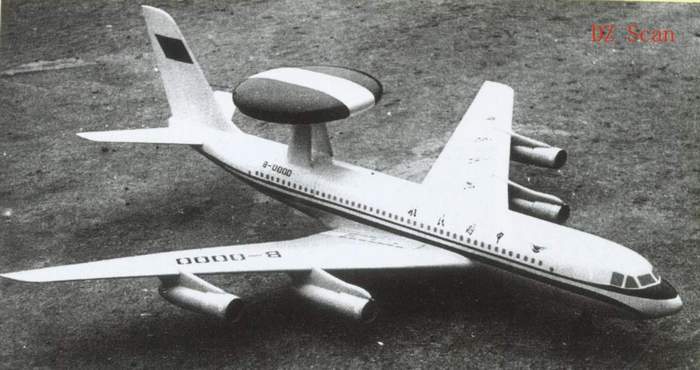
The political climate between China and the West in the mid 1980s provided an opportunity to acquire modern Western surveillance systems and several proposals were made. At this point, it was still a matter of debate whether China’s own aviation industry was mature enough to develop an indigenous AEW&C aircraft. In 1992, a group of Chinese scientists and engineers sent a report to the government explaining the country’s abilities and the PLAAF’s requirements. As a result, the government organized a delegation — including Wang Xiaomo, one of China’s leading radar experts — that recommended purchasing a foreign system to establish an operational capability as soon as possible. China would proceed with the development of its own systems in parallel. The delegation approached three countries: Israel, Russia, and the United Kingdom.
KJ-2000 Mainring
Following the cancellation of the Y-10 AEW&C project, China originally planned to purchase a Western system instead. The first proposal centered around the British GEC-Marconi Argus 2000; a mechanically scanned radar system originally planned for the U.K.’s abortive Nimrod AEW3 but installed instead in an Ilyushin Il-76MD Candid airlifter. This would have involved a similar arrangement to that of the Nimrod AEW3, with bulbous nose and tail radar arrays.

But it was a second proposal, from the Israeli company Elta Electronics, which was chosen. Elta offered a more sophisticated system based around the EL/M-2075 Phalcon, which was also originally planned around nose and tail arrays but complemented by two side-mounted antennas. Although political relations deteriorated after Tiananmen Square, and despite the Western embargo, the Israeli project proceeded as planned. In 1992 negotiations began with Israel and Russia for a possible purchase of four ‘green’ Il-76MD aircraft which would then receive the radar.
What Russia offered, logically, was a version of its own A-50 Mainstay AEW&C aircraft, re-designated A-50I or A-50AI for export. An agreement was signed in May 1997 for one aircraft at a cost of $250 million, plus an option for three more amounting to $1 billion. In the A-50, the radar is installed in a traditional rotodome on top of the fuselage, providing better radar coverage. After some delays, on October 25, 1999, Russia delivered the first A-50I prototype — actually a former Russian military A-50 — to Tel Aviv for the installation of the Phalcon system.

However, the installation was never completed, amid an intensifying political dispute between the U.S. administration and the Israeli government over technology transfer to China. In July 2000 the contract was canceled, and the installed equipment was removed.
Consequently, China had to continue with its own efforts to develop a modern AEW&C system. This was known as Project 998 and was run by the No. 603 Institute, the Xi’an Aircraft Company (XAC), and the Nanjing Research Institute of Electronic Technology/No. 14 Institute — the latter responsible for the radar.
After the Israeli systems had been removed, the A-50I prototype was handed over to China in 2002, where Xi’an began its own airframe modifications and installation of the indigenous Type 88 radar and command, control, communications, computers, intelligence, surveillance, and reconnaissance (C4ISR) system, including the ARINC429 data bus, identification friend or foe (IFF), and datalink. Reportedly, an executive order issued by the Chinese president ensured that significant resources were invested in this high-priority project.
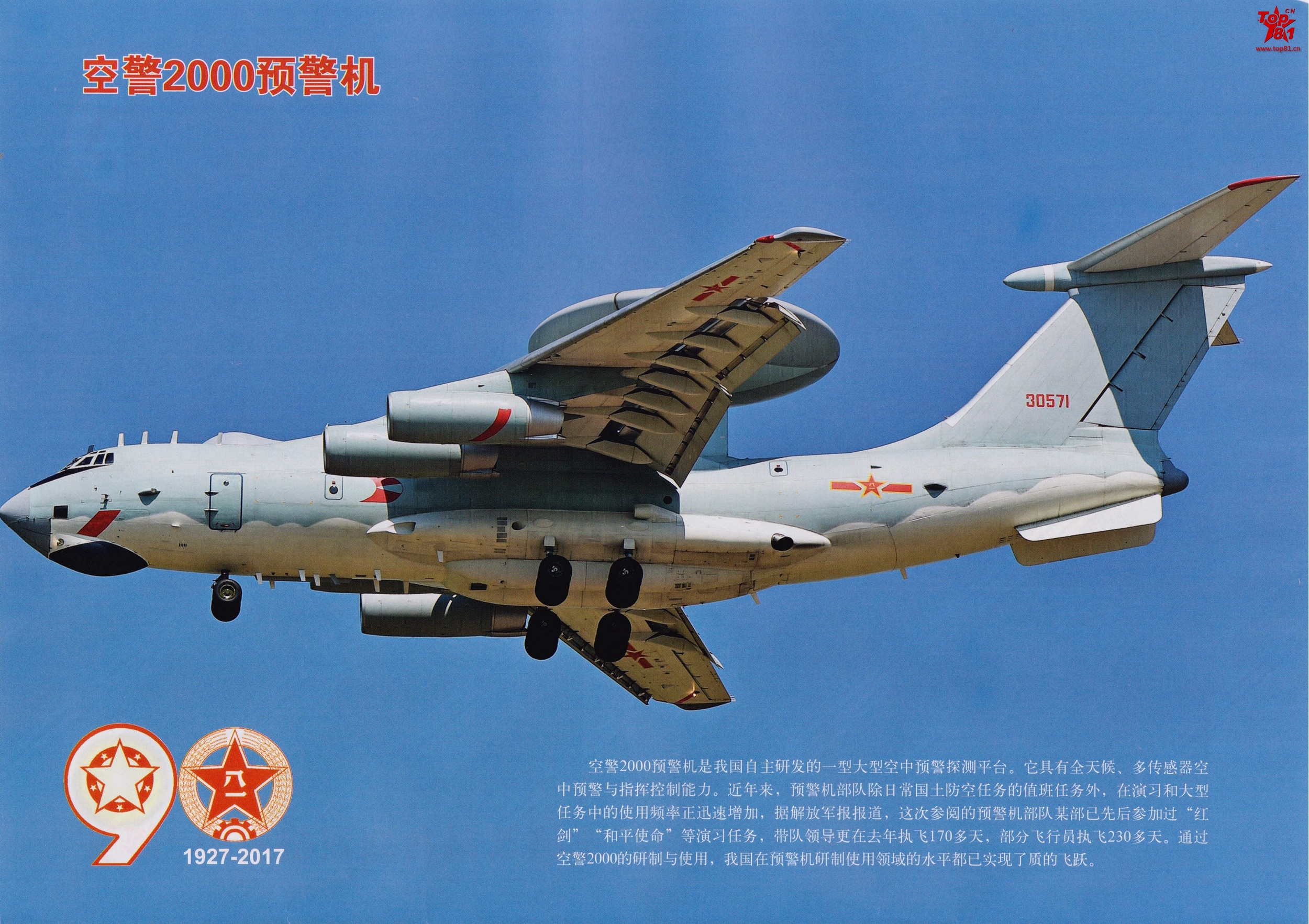
Type 88 is not a single radar but three active electronically scanned array (AESA) antennas in a triangular configuration within a fixed radome. Its maximum range is said to be 470 kilometers (292 miles) and it’s reportedly able to track hundreds of aerial targets simultaneously.
In contrast to the Russian A-50, the Chinese radome is larger in both diameter and depth and has revised mountings. Other aircraft differences include a solid nose replacing the original glass section, and the huge horizontal strakes along the main landing gear fairings being removed. Instead of these, the KJ-2000 features two canted trapezoidal fins on the rear of the fuselage; there are also two semi-circular dielectric devices on the outer wingtips of unknown function.
Another feature is a satellite communication/satellite navigation (SATCOM/SATNAV) blister on top of the fuselage and ahead of the wing, which is of a slightly more bulbous design than the Russian equivalent. The KJ-2000 has a regular flight crew of five and, based on the limited available information, carried 11 mission crew members. It can patrol for about 12 hours and has a maximum range of 5,500 kilometers (3,418 miles).

The first KJ-2000 prototype made its maiden flight on November 11, 2003. Flight testing continued until late 2005. In the meantime, four regular China United Airlines Il-76MD transport aircraft were selected for conversion and delivered to the PLAAF. The first two KJ-2000s were handed over to PLAAF in 2005 and, after being certified in 2007, were declared operational in December 2007. Today — after now more than 15 years of service — all four KJ-2000s are stationed in Jiangsu Province, facing key adversaries Japan and Taiwan. However, due to the limited number of Il-76MDs available, no further aircraft were ever converted.
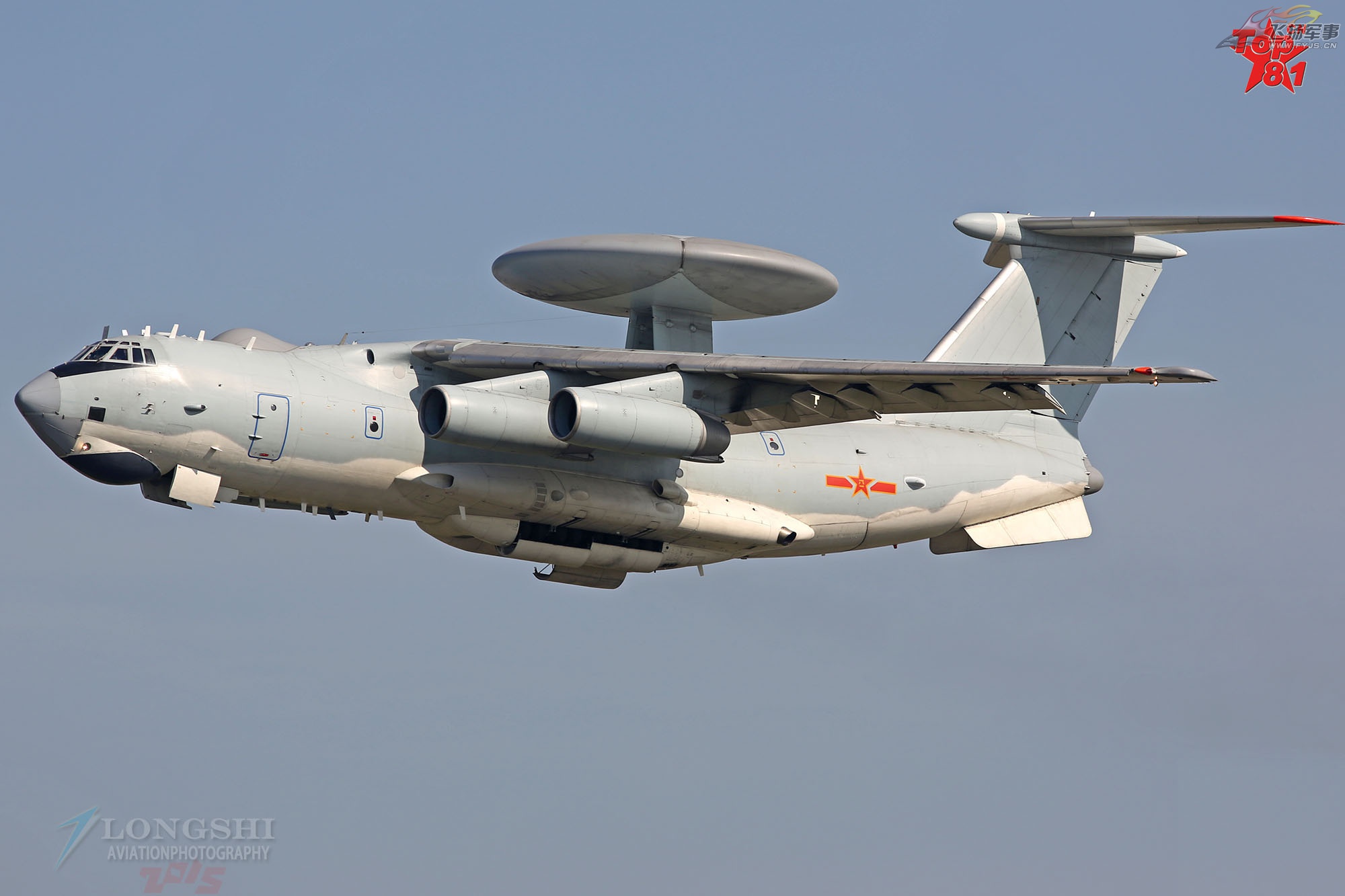
As for the original A-50I/KJ-2000 prototype, this had its radome removed in late 2014 and was converted into a testbed for the WS-18 turbofan — an indigenous development of the Russian D-30KP-2 engine. The latest reports suggest that the KJ-2000s will eventually be replaced by a new design based on the Y-20A transport, known as the KJ-3000.
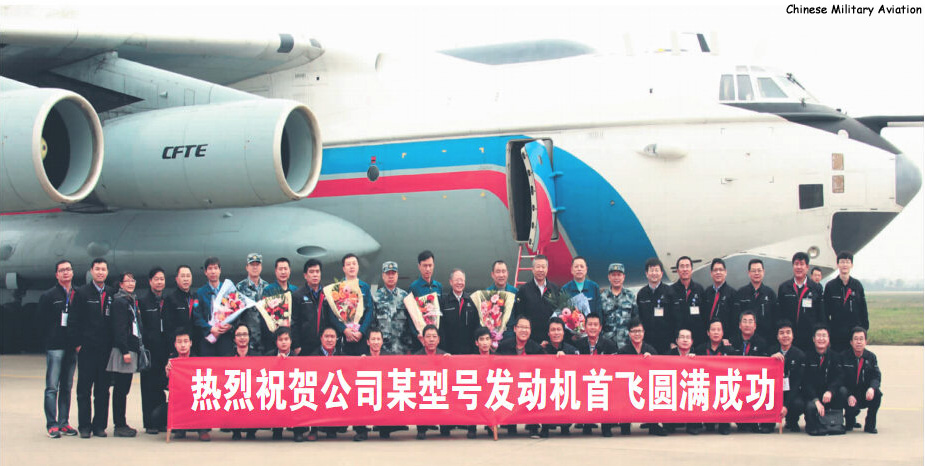
In the meantime, the KJ-2000 remains China’s first and, so far, largest dedicated AEW&C aircraft.
Shaanxi Y-8J
Another dedicated AEW&C aircraft, the Y-8J is based on the Y-8 turboprop transport and is used by the People’s Liberation Army Navy (PLAN) Naval Aviation. The AEW&C variant of the Y-8, developed under Project 515, was first spotted near Shanghai in 2000. Uniquely, it features a British Skymaster surveillance radar, housed in a prominent bulbous and partially drooped nose radome.
China managed to obtain between six and eight examples of this radar system in 1996 from the United Kingdom’s Racal company, at a cost of $66 million. The radar itself has a maximum detection range of 400 kilometers (250 miles) and a total of 100 aerial targets can be tracked simultaneously; up to six friendly fighters can be directed to intercept enemy aircraft. The control center is built around four consoles in the pressurized cabin.
Additionally, the Y-8J has a limited command and control (C2) capability. Its self-defense suite includes radar warning receiver (RWR) antennas installed on the forward fuselage below the cabin and above the tail cone.
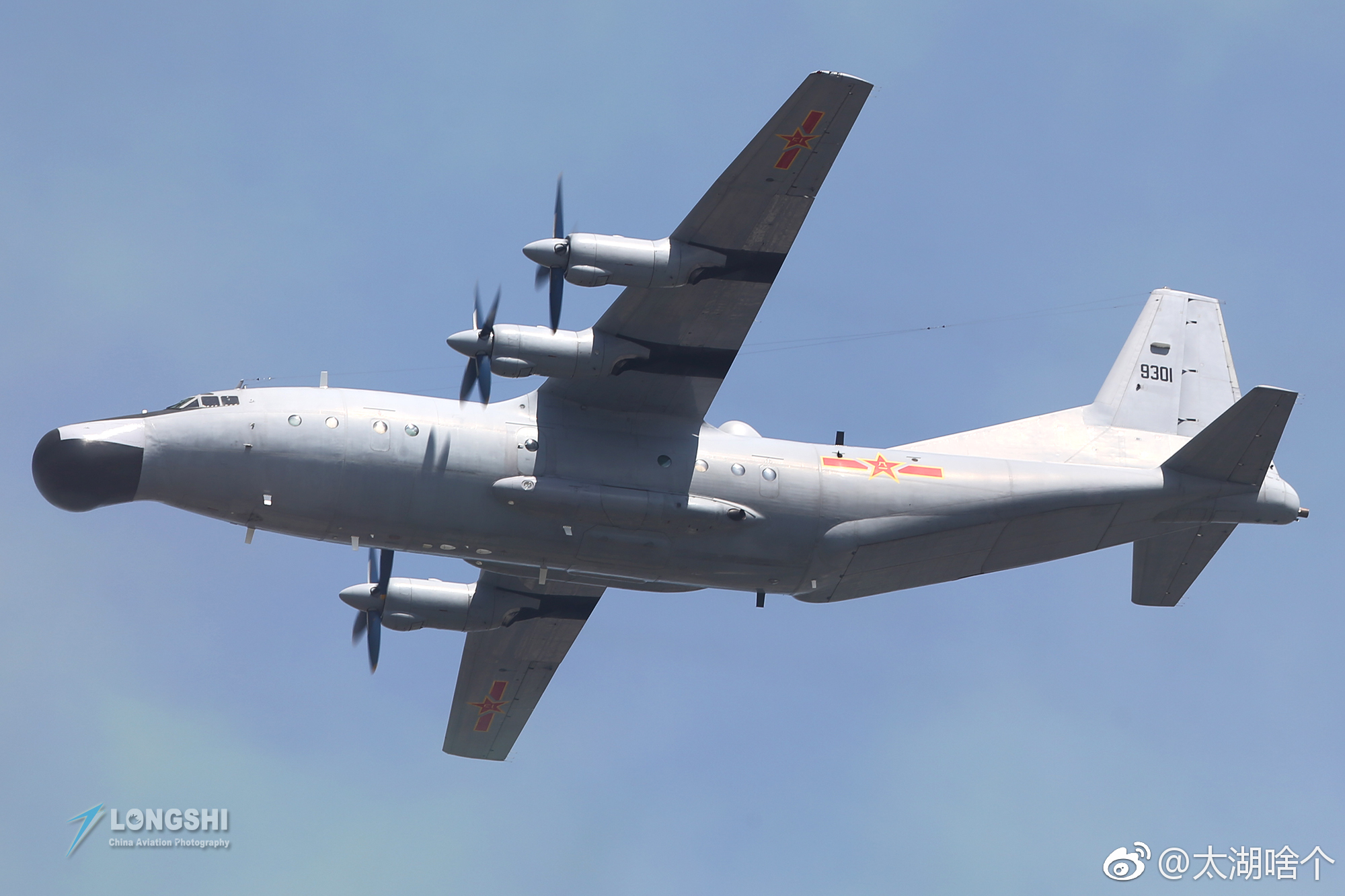
The Y-8J prototype reportedly first flew on September 26, 1998, and altogether four Y-8C transport aircraft were converted by the Shaanxi Aircraft Industry Corporation (SAC). Today, all four are in service with the PLAN Naval Aviation within the Eastern Theater Command and they fly routine missions over the East China Sea. It has long been rumored that the type can also provide targeting information for long-range anti-ship missiles launched by surface ships and submarines, but this has never been confirmed.
By December 2014, an additional dorsal SATCOM antenna had been installed and at least the final two aircraft feature two small observation windows installed below the tail, possibly for photo-reconnaissance.

As an AEW&C type, the Y-8J is less capable than the KJ-200, which entered service with the PLAN in the early 2000s and is more often used for C2 functions. Since January 2023, the Y-8Js have started to wear low-visibility insignia and serial numbers, in common with all PLAN aircraft.
Shaanxi Y-8W/KJ-200 (or Y-8GX-5) Moth
The Y-8W or KJ-200 (additionally known as the K/JE03 or Y-8GX-5) is China’s second smallest tactical AEW&C type, after the Y-8J. It’s unclear if it was developed as one of two fallback options should the A-50I purchase fail or if it was always intended as a smaller complement to the big but expensive KJ-2000. However, hints that such a type was at least under consideration began to appear in the mid 1990s.
Regardless of its precise origins, the development of the KJ-200 seems to have begun at Shaanxi during the late 1990s. From the start, the production version was planned to be based on the newer Y-8F-600 or Category III transport, in contrast to all previous special mission variants of the Y-8.
However, at first, an older Y-8F‑200 was converted into a radar testbed and was seen in October 2004 at the China Flight Test Establishment (CFTE) undergoing extensive modifications. Most significantly it featured a strut-mounted phased-array radar antenna similar to that of the Swedish Ericsson Erieye. It was later revealed that this first prototype had made its first flight on November 8, 2001. Because of its very distinctive appearance the aircraft gained the unofficial nickname ‘Balance Beam.’

Additional radomes are located at the tip of the nose, and in the tail cone, most likely to provide 360-degree coverage. The JY-06 radar itself was probably developed by the 38th Research Institute at Hefei and was allegedly also tested on a Y-7 transport.
Starting with the second prototype, the KJ-200 made use of the improved Category III airframe, which has a redesigned fuselage with a solid nose and a new tail section with the loading ramp removed. It also has a new glass cockpit, an integrated wing fuel tank, and four high-efficiency JL-4 six-blade propellers giving the aircraft a longer range (5,000 kilometers/3,107 miles) and produces less noise.
As well as the aforementioned radomes, more fairings on the wingtips and on top of the tailfin house electronic support measures (ESM) antennas and there’s also a series of small antennas located on top of the forward fuselage. The command, control, communications, and intelligence (C3I) center is based around eight consoles in a large pressurized cabin. An integrated digital avionics system based on the ARINC429 and RS422 data bus is installed.

The second prototype first flew on January 14 or 15, 2005. However, it had only a brief career, since it was lost in a crash on June 3, 2006, due to wing icing, causing the development program to be temporarily halted. After a delay of a year, which included some redesign, work resumed. The most important measures were a strengthened fuselage and additional small vertical stabilizers on the tips of the horizontal tail fins. These endplates enable the aircraft to maintain stability during a single-engine failure.
The KJ-200 entered PLAAF service in this revised configuration and, altogether, five were produced, operating alongside the four KJ-2000s. Slightly later, the PLAN Naval Aviation also introduced six KJ-200Hs.
In parallel to this operational use, especially those aircraft in service with the PLAAF have been repeatedly upgraded. In December 2016 an image appeared showing the first aircraft modified to KJ-200A standard with a new nose replacing the previous ‘Pinocchio’ design. This is said to cover a new AEW&C radar antenna, which should give the aircraft better coverage in the forward hemisphere; at the same time, the chin-mounted weather radar has been removed.

Currently, it seems likely that all remaining PLAAF KJ-200s will be upgraded to the KJ-200A standard. In contrast, the PLAN Naval Aviation KJ-200Hs are not yet modified but since mid 2019 they have started to carry two-digit serial numbers. In January 2023 low-visibility insignia and serial numbers also began to appear on the PLAN aircraft.
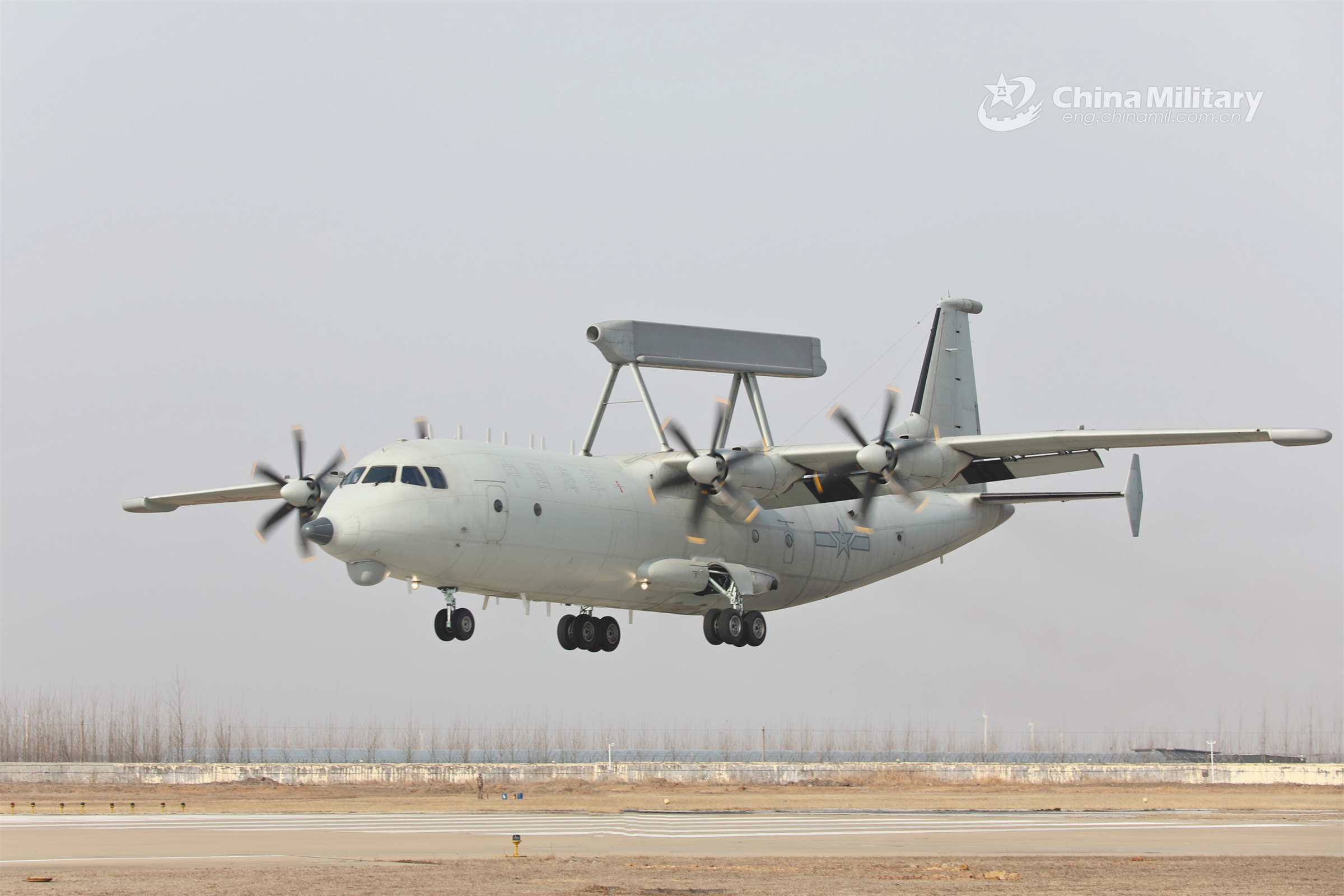
There are contradicting reports concerning the future of the KJ-200. Previously, it was often claimed that the KJ-200 would be only an interim type, later to be replaced by the more capable KJ-500. While this seems to be broadly correct, both branches still operate KJ-200s and in December 2017 an image appeared showing a further improved variant being tested at the CFTE — this is tentatively known as the KJ-200B.

The first prototype KJ-200B had been built by 2016 and, in contrast to the regular KJ-200, the new version appears to feature a SATCOM antenna on top of its forward fuselage, a new forward AEW&C antenna in a bigger nosecone similar to that of the KJ-200A, side-looking ESM antennas on its rear fuselage, and a new ESM antenna on top of its vertical tail fin. Several additional ESM antennas can be seen underneath the forward and rear fuselage. Not much is known about its flight testing, but an image from February 2022 indicated that a first example had been built — or, more likely converted — for the PLAAF. In January 2023 it was confirmed to be in service.
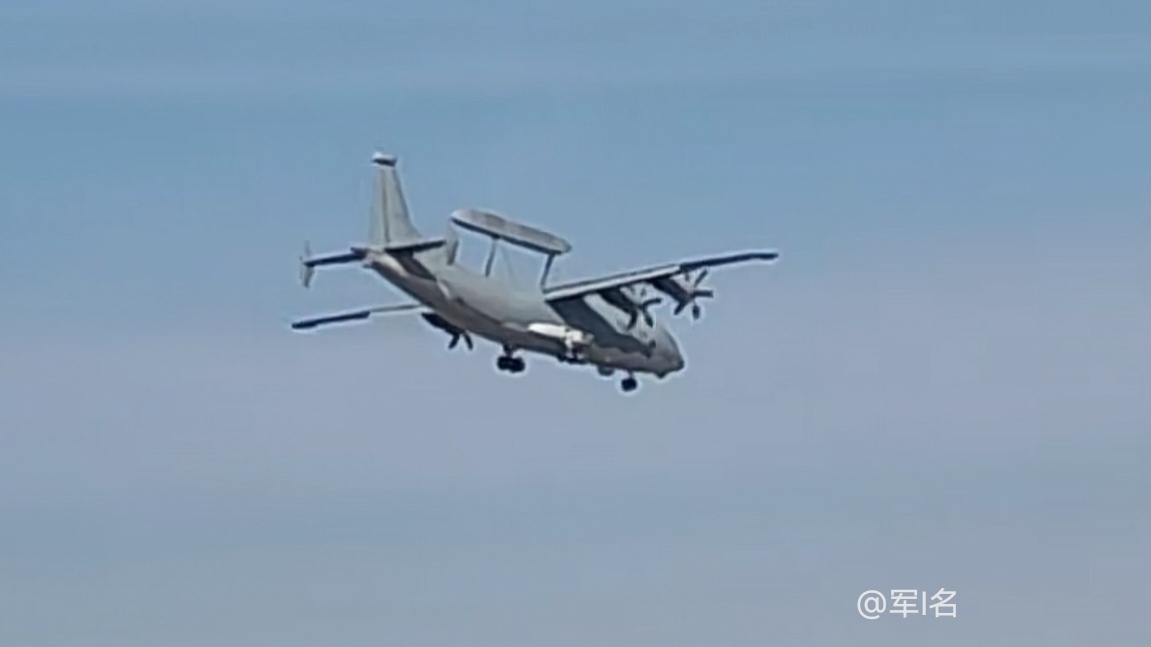
Additionally, a photo released in February 2022 showed a baseline KJ-200A fitted with an inflight refueling probe above the cockpit, however, it’s not yet clear if this is directly related to the KJ-200B. The probe-equipped version is known unofficially as the KJ-200AG, and it also has additional ESM antennas on both sides of the rear fuselage.

Shaanxi Y-9W/KJ-500 (or Y-8GX-10)
In some ways, the development of the ‘Balance Beam’ configuration for the KJ-200 was a surprise. The first known studies for AEW&C versions of the Y-8 in the mid 1990s featured different radar arrangements. The first one — known via a very crude sketch — had a radar configuration akin to the British Nimrod AEW3, but with much more bulbous radar arrays. Most likely, this was only an early iteration of the Y-8J. The second study is a wind-tunnel model of a Y-8 with a traditional ventral rotodome/radome above the fuselage with the disk attached on top of two parallel struts.
A first glimpse of this third version of the Y-8 AEW&C aircraft came in late 2005, in the form of studies and a wind-tunnel model. The first real hardware appeared in early 2006 when a civil-looking Y-8 testbed was spotted at the CFTE.
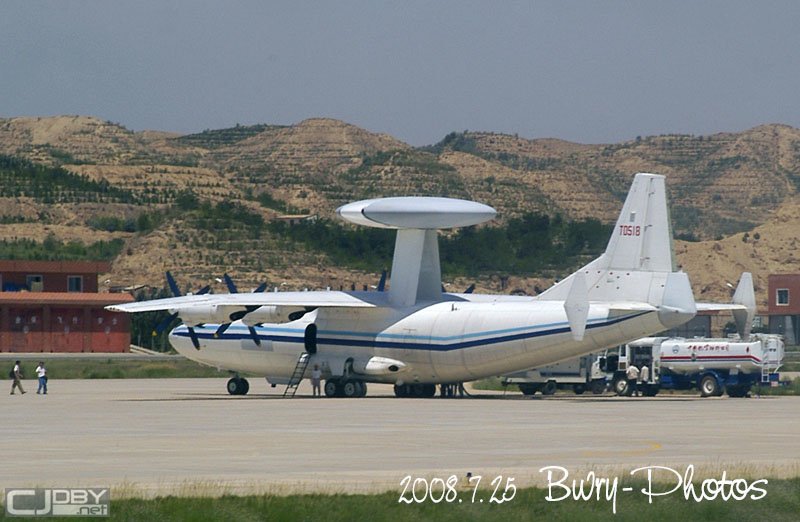
In contrast to the KJ-200, this version is based on the less advanced Y-8F-400 airframe, still powered by the original WJ-6A engines driving four-blade propellers but with a solid nose replacing the Y-8’s original glass nose. Little information about the radar is available, but most assume that it’s a passive electronically scanned array (PESA) type and a product of the 38th Institute. It seems this aircraft was a testbed only and was evolved further into two separate types, one of them being the ZDK-03 (also known as Y-8P) for the Pakistan Air Force (PAF). This switched to the improved Category III platform including new WJ-6C turboprops. Altogether, four examples were ordered by Pakistan under a $278 million contract, and all were delivered between December 2011 and February 2015. These aircraft’s roles include acting as an airborne C2 center for the PAF’s JF-17 Thunder fighter jets.

The original KJ-500 prototype doesn’t initially seem to have had much Chinese military involvement. However, the familiar PLAAF markings were added later, and indeed, China opted for a further-improved variant, apparently originally under the internal designation Project 021. But progress was far from rapid; it seems its priority may have been reduced once the KJ-200 entered service, or it might have been held up by delays with the new radar.
Unlike the ZDK-03, the KJ-500 features a new AESA-type radar. In contrast to the Pakistani aircraft, which has a rotodome, the KJ-500’s radar uses three AESA antennas arranged in a triangular configuration to provide 360-degree coverage, as in the larger KJ-2000. The radar is allegedly a product of the No. 38 Institute. Several radars and different radome shapes were evaluated on a Y-8CE testbed during development. An additional SATCOM antenna is also integrated on top of the radome.
Like other members of the family, this variant also has enlarged nose and tail radomes, which could house additional radar antennas to cover both the forward and rear hemispheres. It also features rectangular bar-shaped fairing housing electronic intelligence (ELINT) antennas on each side of the rear fuselage. Countermeasure launchers are located below the rear fuselage. The KJ-500H naval variant only has missile approach warning sensors (MAWS) installed aft of the cabin door and ahead of the tail.


Two KJ-500 prototypes had been built by late 2013 and the first series-production aircraft entered service with the PLAAF at the end of 2014. The PLAN Naval Aviation followed suit, introducing the type around late 2015. Since both the PLAAF and Naval Aviation have repeatedly renumbered their aircraft, it’s hard to assess how many aircraft have been delivered. Overall, about 18-20 aircraft have been confirmed in PLAAF service, within at least three regiments; approximately 25 are in Naval Aviation, within one regiment for each fleet. Based on satellite imagery of the Shaanxi production site, it seems certain more than 40 KJ-500s have been manufactured and the type is still in production.
Like the KJ-200, a probe-equipped version of the KJ-500 also exists; this is the KJ-500A, also the current production variant. The first aircraft was seen in April 2018 and by August 2018 at least two had been built or converted and likely entered service in late 2020. As of today, seven or eight KJ-500As are known to have entered service within three units. KJ-500Hs assigned to the PLAN Naval Aviation have not yet been seen with the refueling probe, but they began to wear low-visibility insignia and serial numbers in October 2022.
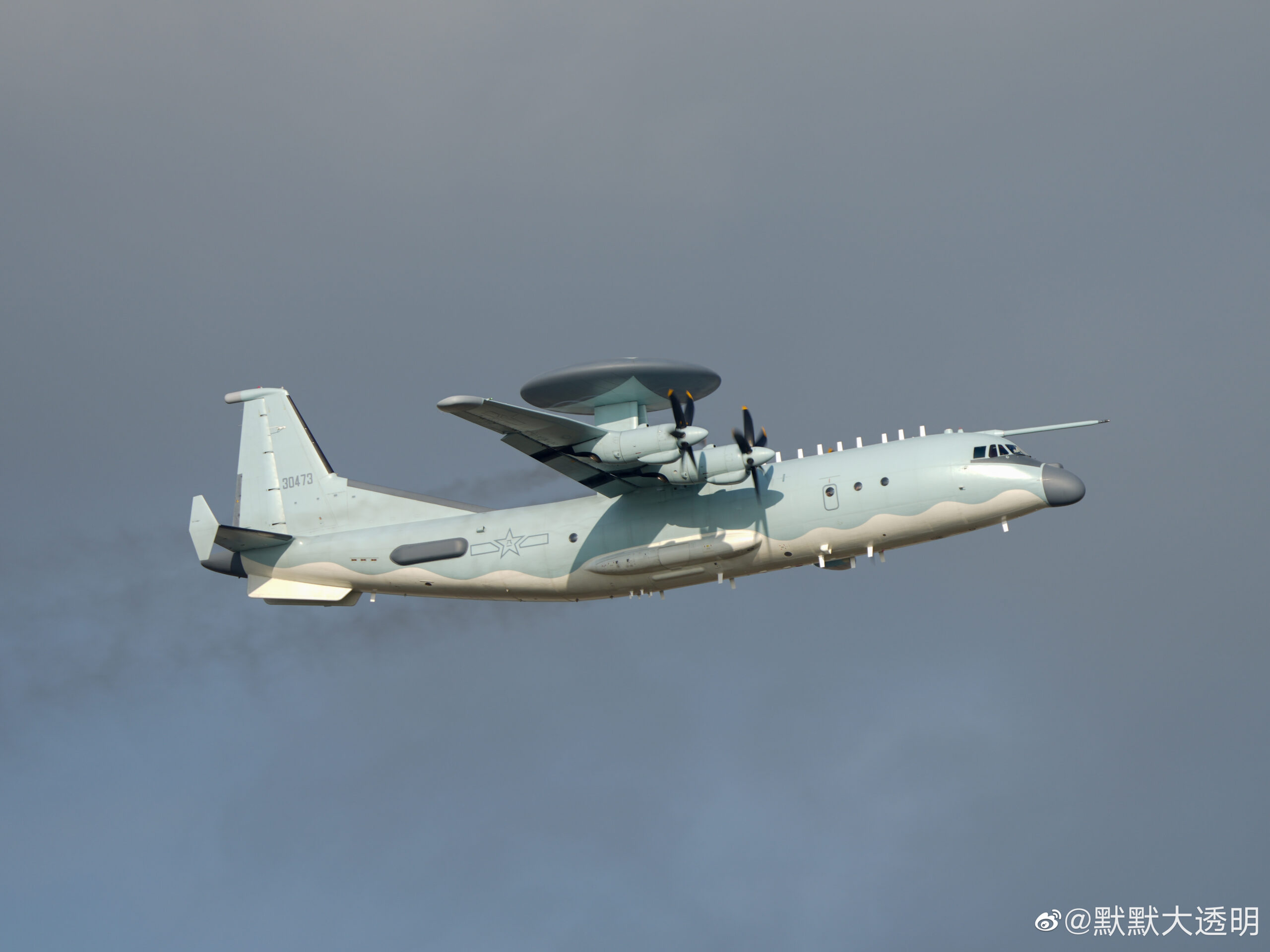

Although confirmed, an image from February 2022 suggests that a possible new variant — perhaps also designated Y-9GX-15 — is undergoing flight testing. Based on a single grainy image of the underside of the prototype, it’s not clear if it’s actually an AEW&C type, although there are rumors it may be equipped with a dual-band early warning radar system. Overall, it appears similar to the KJ-500A but seems to carry a smaller radar antenna of a different design, as well as a unique tail ‘sting’ that may house an electronic warfare antenna.
AEW&C helicopters
The PLAN’s current in-service fixed-wing aircraft carriers, Liaoning and Shandong, are equipped for short takeoff but arrested recovery (STOBAR) operations and are unable to support a fixed-wing AEW&C aircraft. Such an aircraft, the KJ-600, which will fulfill the same role as the U.S. Navy’s E-2 Hawkeye is now under development for the PLAN’s first catapult-assisted takeoff but arrested recovery (CATOBAR) carrier, the Fujian. The KJ-600, which we will detail in a moment, is expected to enter service later in this decade, but in the meantime, China sought a helicopter-based carrier AEW&C solution.
Ka-31 Helix
Since the PLAN already operates a few Ka-28 Helix anti-submarine helicopters, the Ka-31 was a logical choice as an off-the-shelf AEW&C purchase. The first rumors of the acquisition were noted in early 2010. It seems only one Ka-31 was acquired initially for evaluation, followed by orders for eight more. The first two from this batch had apparently been delivered by late 2010 and all nine were in service by mid-2011. Since the carriers were not yet ready, the new helicopters were stationed onboard the Luyang I/II and Sovremenny class destroyers, to provide AEW&C coverage for the combat fleets.

Based on the proven Ka-27/28 anti-submarine/utility helicopter, the Ka-31 features an E-801M solid-state radar. For operational use, the antenna extends vertically down below the helicopter’s fuselage, where it rotates at six revolutions per minute. When not in use or on the ground, the antenna is retracted horizontally upward and stored under the helicopter’s belly. Based on available reports, the radar can detect a fighter-size target at up to 150 kilometers (93 miles) away, and a surface ship at up to 200 kilometers (124 miles); it is said to be capable of tracking up to 40 targets simultaneously.
In PLAN service, the Ka-31 has received some updates since 2011. The first was an alleged indigenous datalink system. Although unconfirmed, this may be able to provide guidance for anti-ship missiles launched from surface ships, allowing over-the-horizon attacks. A pair of RWRs were also installed on the sides of the nose.
The future of the PLAN’s Ka-31 is uncertain, with reports that China may retire the Ka-28 anti-submarine variant. However, a Ka-31 was recently seen during trials onboard the Guangxi, one of the three Type 075 landing helicopter docks.

Z-18J ‘Bat’
After an initial interim purchase from abroad, in the shape of the Ka-31, China developed a domestic AEW&C helicopter, the Z-18J, locally nicknamed ‘Bat.’ A first trial aircraft based on a modified Z-8 was spotted in November 2009 near the Changhe Aircraft Industries Corporation (CAIC) facilities, with a distinctive retractable radar antenna attached to the rear loading ramp. The design appeared to be similar to the French AS532 Horizon battlefield surveillance helicopter, with a radar lowered vertically once the helicopter reached its operational ceiling. In its rotating position, the antenna can provide 360-degree coverage; it retracts upward for storage. The radar is thought to be a long-range multi-mode AESA type, developed by the 38th Institute and said to have a detection range of more than 200 kilometers (124 miles).
Not much is known about that type’s testing phase, but an improved Z-18JY flew in 2011 and at least three examples were operational onboard the Liaoning since early 2014.
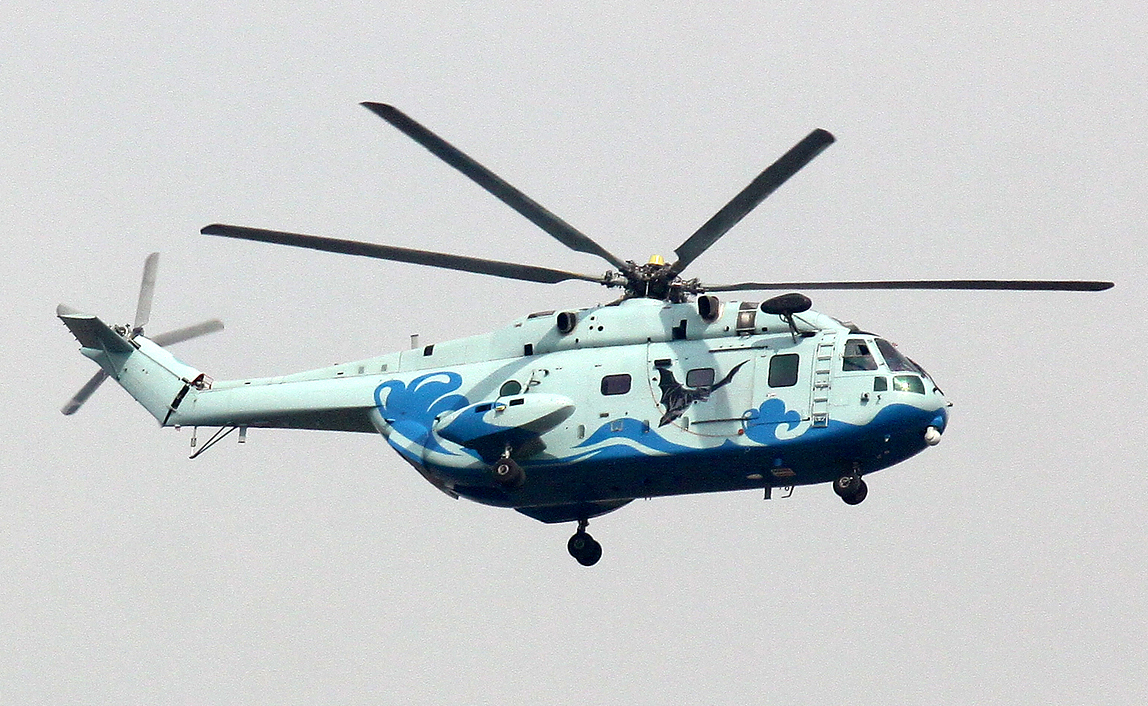
Based on the Z-18 naval helicopter, itself a military development of the civil AC313, the helicopter is much larger than the compact Ka-31. Indeed, it’s too big to be operated off any PLAN destroyer and is only used onboard the two in-service aircraft carriers. To save space, the rotor blades and tail boom can be folded.
Besides its AEW&C role, the Z-18J can also be used for search and rescue, using a hoist mounted on the starboard side of the forward fuselage. Additionally, and like other Z-18 variants, it is equipped with a forward-looking infrared (FLIR) turret below the nose for night and poor weather operations. It also has several MAWS and RWR antennas on the nose and rear fuselage, plus countermeasures launchers installed in the sponsons.
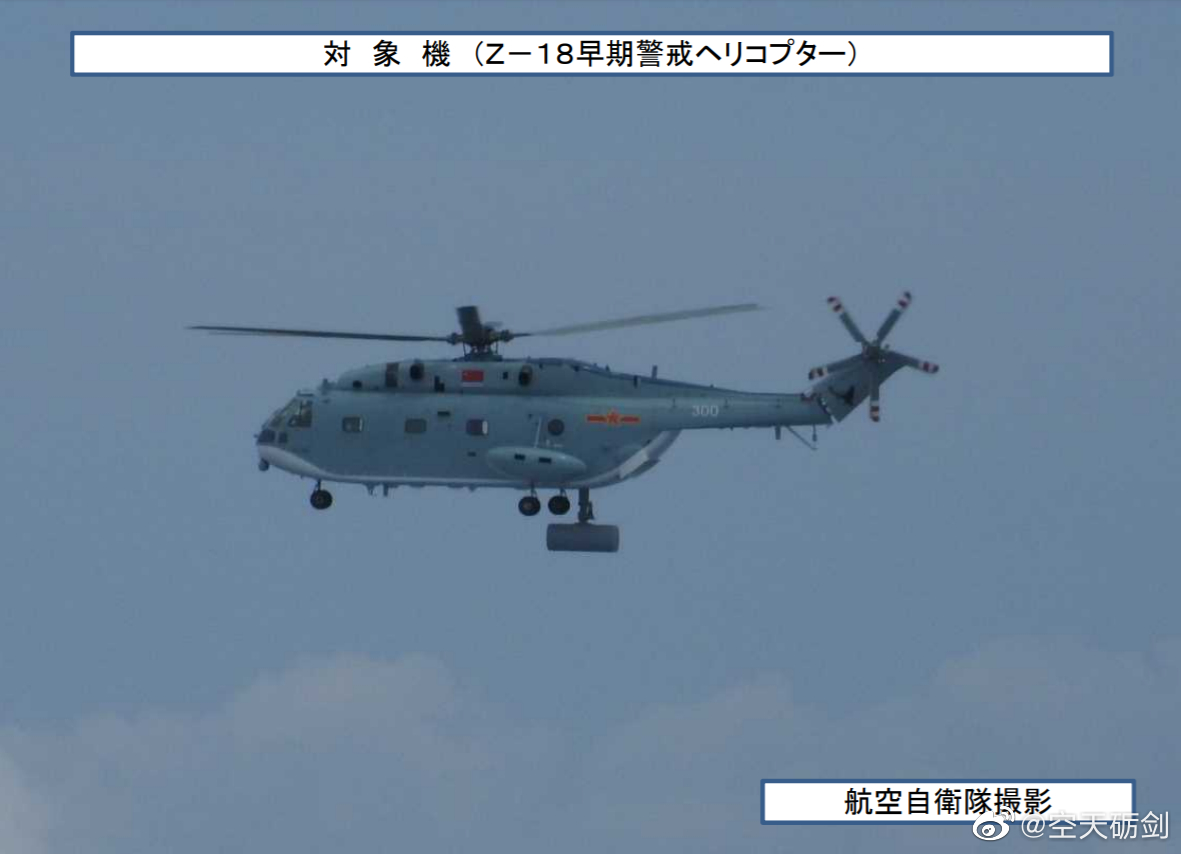
Overall, the Z-18J is rarely seen but in December 2021 a photo appeared suggesting that an improved variant, perhaps designated Z-18JA, had entered service onboard the Shandong. In contrast to the regular Z-18J, it features a different engine and gearbox compartment which is said to house new WZ-6C engines.
KJ-600 — fixed-wing carrier AEW&C
Well before it was confirmed that the CATOBAR-capable Type 003 aircraft carrier was under construction in Shanghai, it was presumed that the No. 603 Institute/XAC was developing the PLAN’s first fixed-wing shipborne AEW&C aircraft. This eventually emerged as the KJ-600.
However, for a long time, it was expected that China’s fixed-wing shipborne AEW&C aircraft would be based on the Y-7 or the modernized MA60 transport, although others speculated that this design would be too large for carrier operations. Regardless, the JZY-01 technology demonstrator was indeed based on the Y-7/MA60 and it seems XAC gained a lot of experience using it, although it allegedly never actually flew.
Although not a direct copy of the E-2D Hawkeye, the KJ-600 is very similar both in size and overall design. It has almost exactly the same configuration, is powered by two turboprop engines, and features a rotodome, folding wings, and quadruple tail fins.
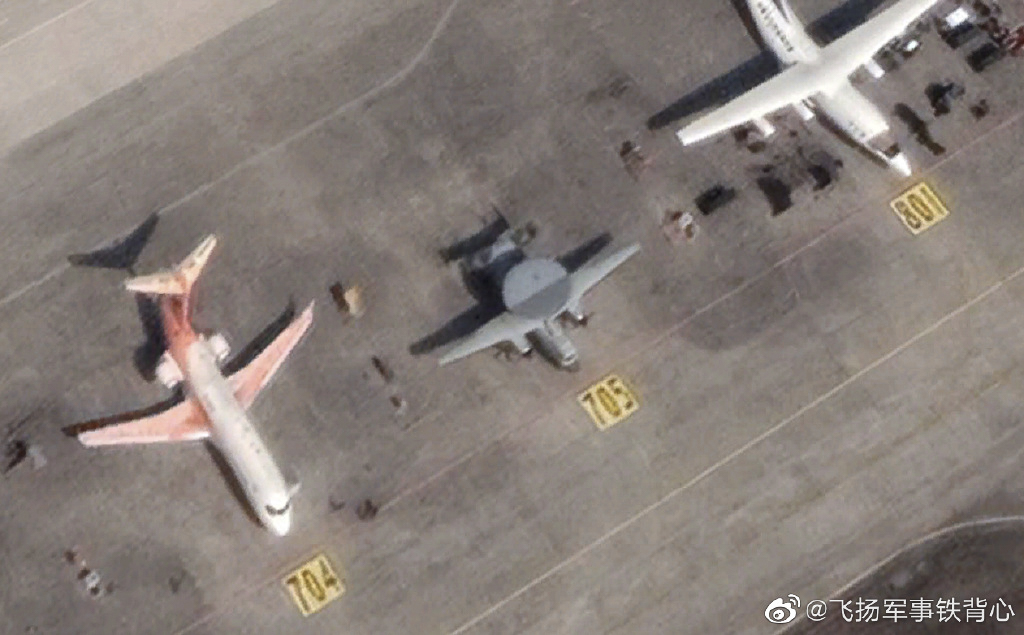
Besides all these similarities, the KJ-600’s front and rear are quite different from the U.S. design. The cockpit appears to be provided with much larger rectangular-shaped front and side windows, while the tailfins are significantly taller.
Based on the limited information available, the current prototypes are powered by two uprated WJ-6C turboprops driving six-blade high-efficiency propellers like those used by the Y-9 transport. The series-production variant is expected to use the new AEP500 turboprops.
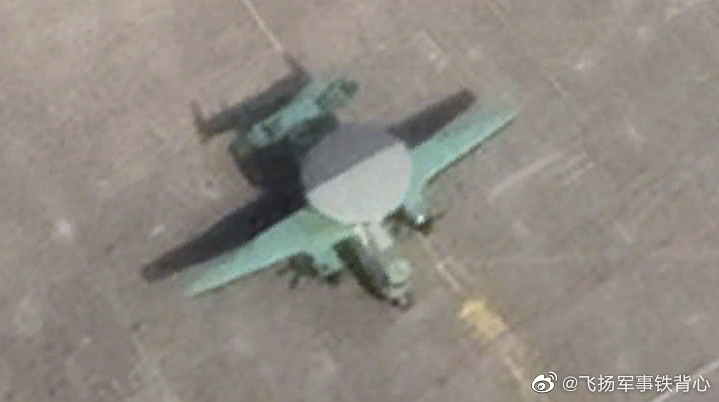
Unlike the KJ-500 and KJ-2000, the KJ-600’s AESA radar appears to feature a single mechanically rotating antenna inside a rotodome to provide 360-degree coverage. Allegedly the radar is the KLC-7 developed by the China Electronics Technology Group Corporation’s (CETC) 14th Institute. A series of blade antennas, likely for communications, is mounted below the fuselage. Like the E-2D, it features a brick-shaped rearward-facing antenna on the tail.
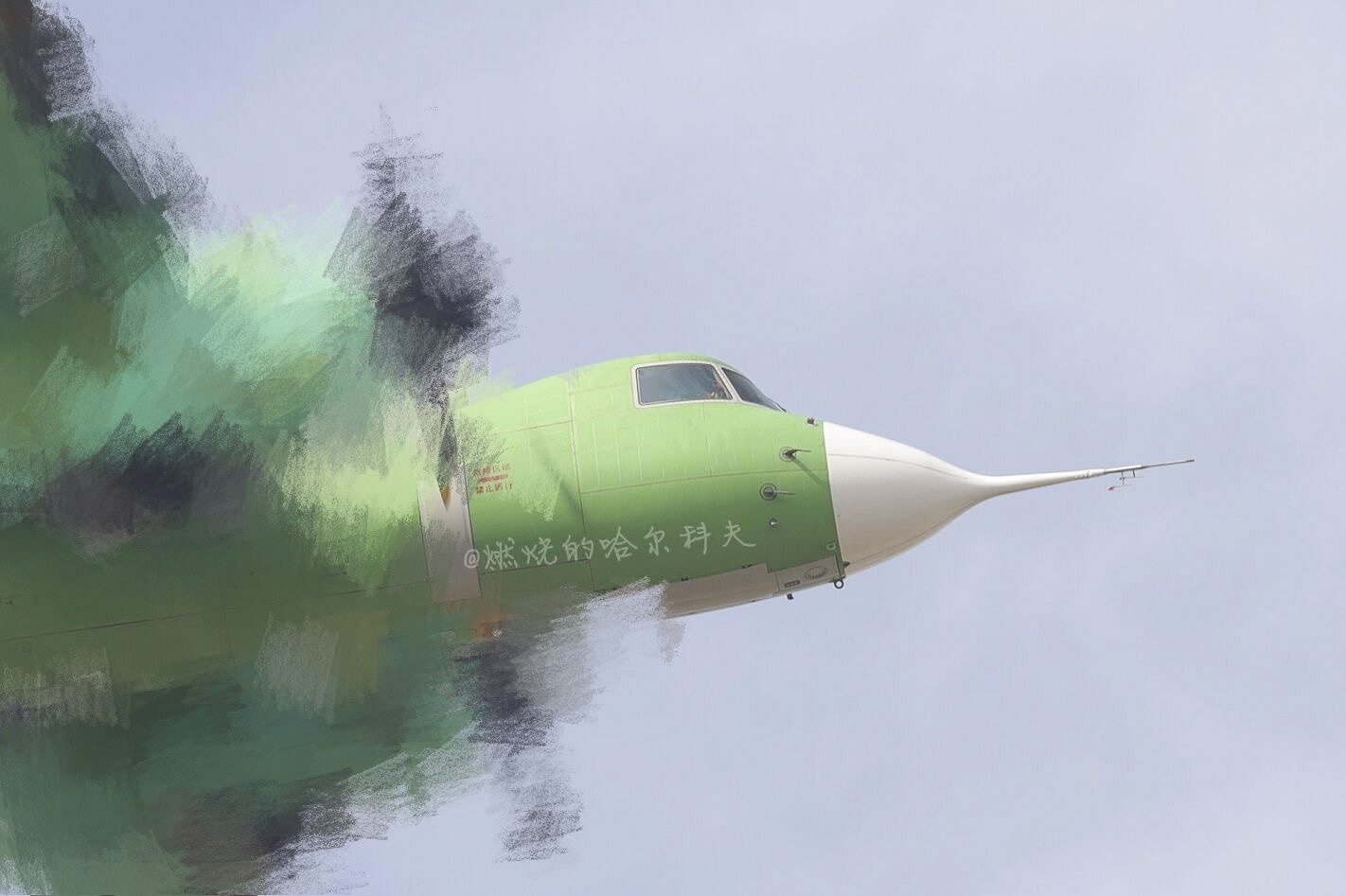
Based on available imagery, a full-scale mock-up had been built and tested at the Wuhan trials facility by January 2017. A true prototype allegedly performed its maiden flight at XAC’s facility on August 29, 2020, and by April 2021 a second prototype had been completed. It was rumored that a ‘full-standard’ prototype conducted its maiden flight on June 24, 2021, and satellite images from November 2021 onward suggested that two more prototypes had been built at XAC. The latest, sixth prototype was reportedly seen in early March 2023 and all six KJ-600s are now undergoing various tests at the CFTE at Xi’an-Yanliang. The next step will likely involve trials at the land-based catapult facility at Huangdicun.
Future AEW&C
For some years now there have been rumors of a possible next-generation AEW&C aircraft — unofficially dubbed KJ-3000 — under development at XAC, primarily to replace the four original KJ-2000s. This would likely be built on the basis of XAC’s Y-20 airlifter.
It’s hard to determine just how credible these rumors are. However, a wind tunnel model has allegedly been tested, with a possibly corresponding photo released in December 2022. If this is indeed an AEW&C aircraft study, this Y-20B-based design appears to feature additional large radomes above and below the forward fuselage, as well as smaller fairings on the leading edges of the sponsons.
Other analysts believe this model actually shows an airborne command post or long-range communications aircraft, perhaps to work with the PLAN’s ballistic missile submarines, like the U.S. Navy’s E-6B Mercury. If so, it may well be the case that the ‘true’ KJ-3000 employs a traditional AEW&C configuration with a large rotodome/radome housing modern dual-band AESA radar antennas. An inflight refueling probe would likely be mounted above the cockpit. So far, however, there is no firm evidence of the KJ-3000’s existence.
Meanwhile, some observers suggest the PLAAF is broadly satisfied with its KJ-500 for the time being and prefers to wait for a smaller, airliner-based design.
Whatever the future holds, airborne early warning and control clearly now has a firm place within the PLA. With China’s aerospace industry continuing to pump out new designs and with its military eager to introduce new and improved capabilities, it’s more than likely that we will see yet more Chinese AEW&C platforms in the future and that the importance of these aircraft within the PLA’s air warfare doctrine will continue to grow.
Andreas Rupprecht is a well-regarded Chinese military aviation researcher, the author of multiple books on the subject, and a prolific China aerospace news reporter for various magazines since 2007.
Contact the editor: thomas@thedrive.com
